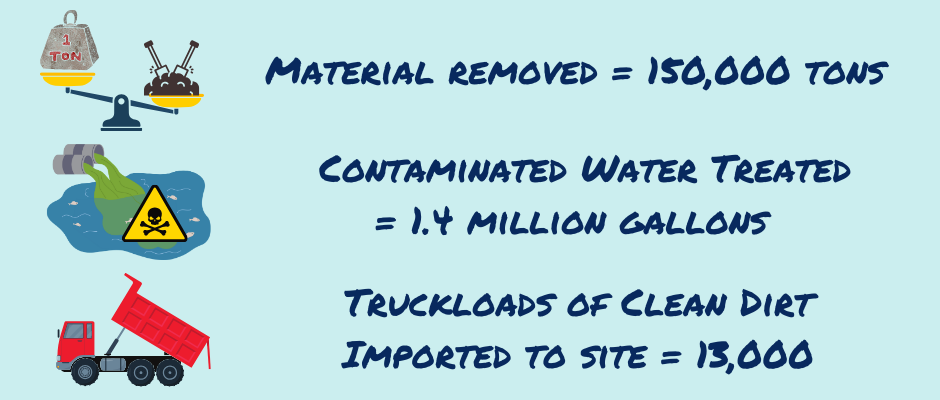San Jacinto River Site Reaches Milestone
We still have a long way to go before the San Jacinto River Waste Pits Superfund Site is fully cleaned up and area communities are safe from dioxin and other chemicals. However, we don’t want to lose sight of a major milestone in the remediation effort.
The EPA announced that the Southern Pit cleanup down to 10 feet has been completed and the final report on the work will be released in August.
Here are a few numbers to demonstrate what went into the remediation project:
Here are some other important things to recognize about this cleanup.
It was accomplished on schedule. Superfund projects seem to take forever and include too many delays and too much foot dragging. However, once the project was approved the actual work was done quickly and professionally.
Public involvement doesn’t slow down the process; it improves it. The EPA reached out to consult with THEA and other community representatives several times during the process, including after an incident that resulted in a potential release of contaminated water. The early communication and responsiveness to community concerns helped build trust in the integrity of the project and allowed the work to stay on track.
Water treatment worked. The company responsible for the toxic material in the Southern Pit originally objected to the plan to treat contaminated water on site. However, the EPA says it successfully treated 1.4 million gallons at the site, significantly reducing the amount of material that needed to be trucked away.
The work didn’t stop for hurricane season. The responsible company also didn’t want work to continue year round. They wanted to halt during hurricane season and start up again in the fall. That would have prolonged the cleanup, potentially exposing the site to two hurricane seasons instead of one. However, the EPA required work to continue with contingency plans in place to protect the worksite if a hurricane blew through Houston. Fortunately, we didn’t see a hurricane, but the planning helped prepare for storms that did hit during the year.
The Bottom Line
The Southern Pit remediation shows what can be done if the EPA moves forward with cleanup plans. Now, let’s get to work cleaning up the Northern Pit!

